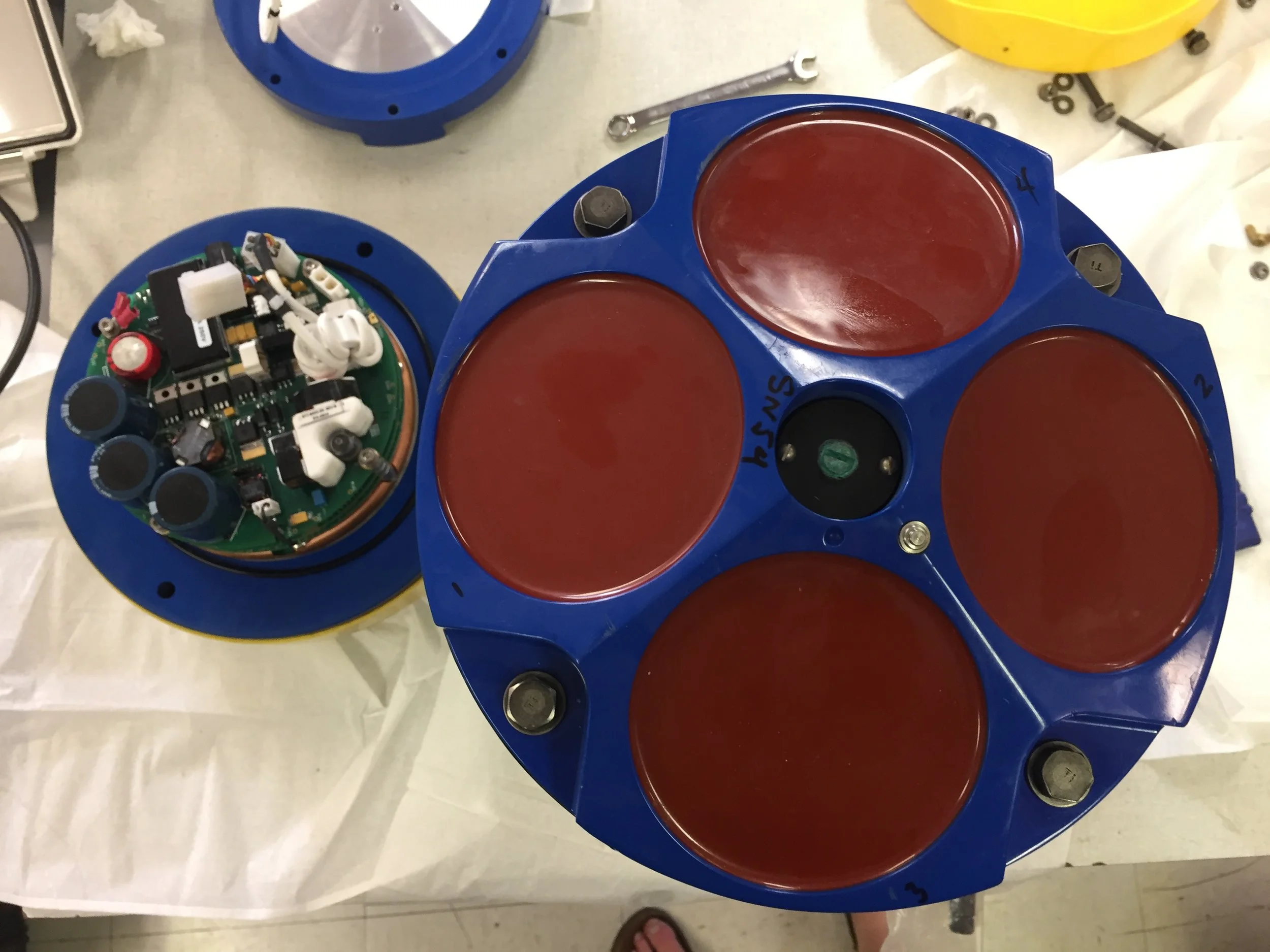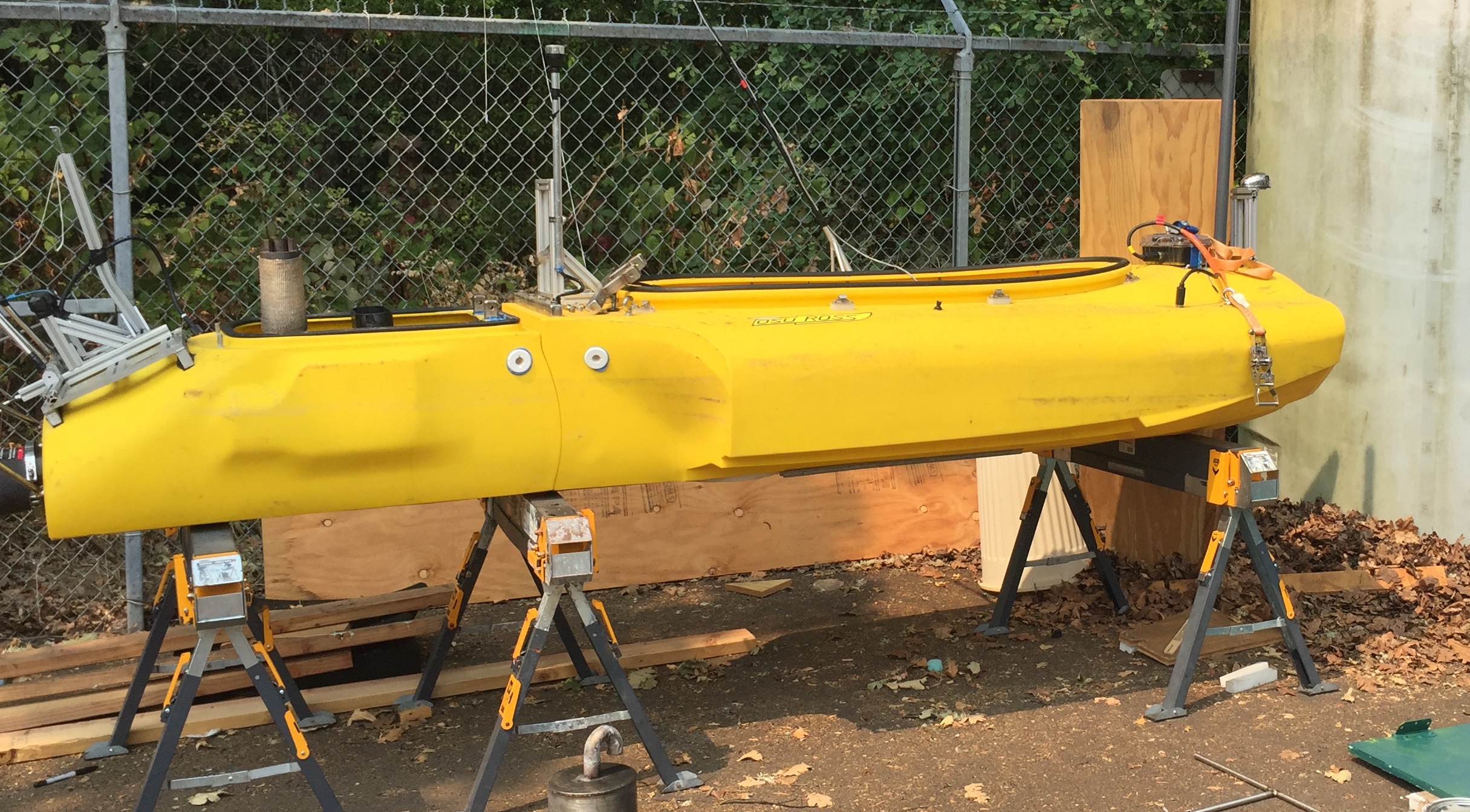by Erin
After instruments are prepped, raft designed and built, and supplies purchased, we had to load all the equipment, tools, and supplies, including the two ROSE boats, into a 20' cargo container to be shipped to Alaska. We had to keep track of what was packed in each box, and which boxes were ready to load, and figure out ways to secure odd bits, such as the giant mooring float in the photo below.
Becca and Jonathan are prepping a large black bin of mooring supplies before it will be forklifted into the container. Notice the giant ball is now in the upper right of the container, ROSE is underneath it, boxes of instruments in the middle, more small mooring balls stuffed in various places. It all has to fit... tetrus with odd shapes!
Jonathan loves driving the forklift. Here he is carrying lead weights that might look small, but each weigh a couple hundred pounds - not something any of us could lift! Watch your toes...
In the end Jonathan and I had to drive the container to Seattle. A bumpy 5 hour drive, when ended at the Alaska Marine Lines dock where a giant forklift picked the container up off our truck and took it away - to a barge to be sent off to Petersburg, Alaska.




![IMG_8307[1].JPG](https://images.squarespace-cdn.com/content/v1/5351ccd6e4b0e85fd91f1c39/1535382239784-0F3F5VMY4E6FD3YXQTKM/IMG_8307%5B1%5D.JPG)
![IMG_8319[1].JPG](https://images.squarespace-cdn.com/content/v1/5351ccd6e4b0e85fd91f1c39/1535382492907-XKA5GL1Z3A5N17928WM5/IMG_8319%5B1%5D.JPG)
![IMG_8303[1].JPG](https://images.squarespace-cdn.com/content/v1/5351ccd6e4b0e85fd91f1c39/1535382353839-1WT744A6FLHAWXF3IZOE/IMG_8303%5B1%5D.JPG)





